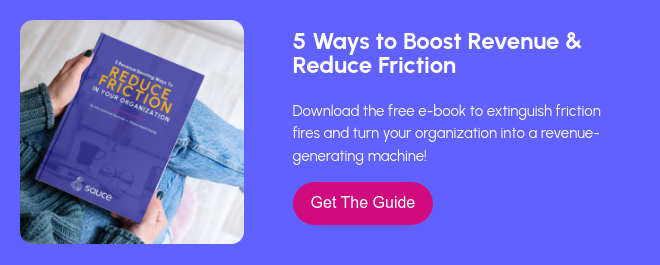Why is Audio Branding Important? How To Improve the Customer Experience and Boost your Brand Sentiment
What is Audio Branding?
Audio branding is the sonic identity of a company. A carefully crafted and tested audio brand strengthens your company and establishes a clear identity that resonates with listeners and staunch brand supporters.
Think about the brands, products, and commercials you grew up listening to. Think of your favorite childhood cereal. What about your favorite chain restaurant? Short melodies or sound effects are as essential to a brand as a logo. The atmosphere of a company or the tone of spoken dialogue impacts how your brand is perceived.
That’s why it’s essential for smart businesses to focus not only on what they’re saying in a podcast or advertisement but how they’re saying it.
Any brand that uses music or voice as part of its branding strategy is implementing audio branding in its customer experience. Nowadays, audio branding has expanded beyond just a traditional media commercial or jingle. Tens of thousands of companies and personalities curate and distribute audio branding through podcasts and engaging dedicated live streaming services. The possibilities and impact of a successful audio branding strategy are endless.
What is SEO? How Does Audio Branding Impact the Customer Experience?
Two key factors can make or break audio branding: disruption and supplementation. The best audio branding does not distract or disrupt your messaging, instead, it should supplement and improve it.
Think about audio levels. Do you like it when an ad comes on that’s just way too loud? No, of course not. It’s disruptive and distracting and likely pushes you away from the advertised product or service entirely. That right there is a powerful lesson: you must be respectful of your listener and treat them the way you want to be treated. Be “inbound” with your audio as much as you are with your marketing strategy. Click here to read our blog, “Discover the Key Differences Between Inbound Marketing vs traditional Outbound Marketing”.
Inconsistent audio branding is disruptive to hear and downright awful to feel. It’s true; if your audio levels are inconsistent or reach 65 decibels and higher, your body responds by increasing stress and thickening your blood. It’s not quite “fight or flight”, but it definitely doesn’t contribute to positive sentiment or purchases. The average alarm is louder than 65 decibels. Think about your alarm for a second. Does it make you feel good? Do you like hearing your alarm throughout your day? Of course not. Without dedicated audio branding, you’re telling your key audiences that you don’t care as much as your competitor who has implemented audio branding.
How audio branding impacts urban living and services
Beyond products, companies use sound to influence people in certain spaces, such as elevators. Muzak, a company in North Carolina, developed and implemented gentle tones inside slow elevators to pass the time of people riding in early skyscrapers (which is why we call it “elevator music”).
And thankfully, after many years of painfully loud construction beeps, bops, and boops, companies and governments are taking noise pollution seriously. Construction is a net good. I think most of us can agree, robust and practical investments in our infrastructure lead to safer transportation and spaces for people to exist. But all of that completely goes out the window when a truck with a single-tone reverse alarm backs up for what seems like 15 minutes at 6am.
We’re getting a bit off track here, but the point is this: construction is welcome, but the noise it creates causes us to perceive it as cumbersome and frustrating (traffic aside). So it’s truly wonderful when policy requires white noise alarms instead, which are not only less disruptive, but better at standing out. Your brain is better at recognizing the direction and distance of white noise alarms since the sound is so unique. This is standard practice in places like Great Britain, and it’s a powerful example of audio branding.
Audio branding in the automobiles we know and buy
Muscle cars. The sweet Cherry pie of the modern American automobile. In the past, these cars were universally acclaimed and revered as a symbol of American prosperity. Now, some consider these vintage machines as nothing more than loud and abrasive compensation with a negative effect on our environment.
Despite the changing culture around muscle cars, one feeling remains constant: the shocking roar of an engine is directly tied to the perception of how powerful the vehicle is. If you get into a car and it sounds wimpy, you might feel that it is wimpy. In fact, that’s the decades-long argument against electric cars and sedans with smaller engine blocks.
Car manufacturers know that what a car sounds like impacts purchase intent and product satisfaction. That’s why, in 2012, BMW installed a system that synthesizes engine sounds in the vehicle’s cabin. The engine itself is plenty powerful! And because of the added sounds, people felt as if the car was powerful too. Sales skyrocketed and sentiment increased. Now, BMW offers this system in the majority of its vehicles. The manufacturer even hired Hans Zimmer to create similar sounds for their whisper-quiet line of electric models!
Does audio improve the retail experience?
In 1998, a British wine shop ran an experiment. They loved music as much as they enjoyed wine and needed to know: does background music affect purchase decisions? The shop played both French and German music for several days, alternating between the two. On the days that French music was played, the French wine outsold the German wine by a ratio of four to one. On the German music days, German wine outsold the French by a ratio of three to one. This experiment launched a fascination with background music in retail stores that continues today. It might seem like common sense, but it’s true: the sounds we experience impact our buying behavior. And it doesn’t stop with music.
Here’s a fun question: think of the grocery store. Now think of the sounds you hear in the store. Better yet, what’s the first song that comes to mind when you think “grocery store”? What about a distinct sound or tone? Grocers put careful consideration into the music and sound you hear as you shop. It’s the same principles applied to the structure of the shopping experience, as well as the placement of the registers. Each is developed in a way that guides you through the store in a predetermined path. This reduces traffic, dampens noise, and creates a seamless shopping experience for those following the path.
Retail as we know it is a tangible sales funnel. Proper audio branding and design removes bottlenecks, reduces friction, and improves sales.
How do I implement audio branding for my business?
Write like you’re speaking
It’s tough to write for the spoken word. But it has to be done. Instead of trying to write like someone else, be yourself. Personalities are entertaining and bold characters are fun. But they don’t always sell reliably. Sometimes, people can get carried away. This is your business’s brand! Treat it with the reverence and respect it deserves. Stay focused, but don’t be afraid to let your unique personality shine through.
Writing for speech is a challenge, and it’s quite different from writing for the page. It always helps to speak your copy aloud as you develop and hone your ad copy. Quick note, this only applies to audio branding that includes voice, so let’s focus on a different angle of audio branding.
Listening is powerful
Think of audio branding as an extension of your business, just like your website. Your visual branding’s tone and style are key in communicating and illustrating value. The same goes for your audio branding as well.
Audio branding is not a sales pitch; it’s friction reduction! Or, if you’re a different kind of business, friction addition. What’s important here, and in any marketing initiative, is intent and strategy. You wouldn’t just slap a logo and color scheme on your website without a rhyme or reason. Doing so results in consumer confusion and brand inconsistency! Don’t do the same for audio presence. It’ll only turn customers away.
Audio is tough! This is why this tip is vital: pay close attention to your audio experience within a business, venue, or retail store. Even outdoor spaces consider audio and design! Focus on how the sounds you hear make you feel, and whether you associate those sounds with that specific space. Do the sounds you hear invite you in and keep you there, or push you away?
This is clearly a subjective exercise. As we mentioned before, there is quantitative, replicable research conducted around audio design and branding in retail, manufacturing, and public spaces. Think of listening as controlled, qualitative research! You’re out in the field, inferring and learning! Then, once you have that qualitative data, you can back up your findings with research, strategy, and testing.
Research your competitors
Learning from the competition is the backbone of any sound marketing strategy. It’s called a SWOT, which stands for strength, weakness, opportunity, and threat. At Sauce Marketing, we conduct SWOTs for any comprehensive marketing strategy. It’s important to know our client’s competition and what they do well. It’s even more important to understand your own strengths and weaknesses. Once you have a greater understanding of where you are, you’ll have a better understanding of what you need to improve. Plus, the added competitive research informs your opportunities! Try something new, or simply try to emulate and build upon what a competitor has started.
Work with a Growth Agency That Can Guide You Through Audio Branding
It doesn’t matter what sort of business you’re in; audio branding is essential. Whether you’re a private office, managing a podcast, or selling medical equipment, audio branding will guide your customers through your intended sales funnel! That’s why we offer audio branding strategy and services at Sauce Marketing. We want to help you discover engaging, meaningful ways to help your business grow and keep your customers happy!
Audio branding is only part of a comprehensive marketing strategy. But it’s a pretty powerful piece that will change your business. Grow and sound smarter by scheduling a call with our certified Growth Guide today.
.webp?width=12693&height=4513&name=Sauce%20Logo%20Dark%20Ht%20(1).webp)

.webp?width=180&height=64&name=Sauce%20Logo%20Dark%20Ht%20(1).webp)











